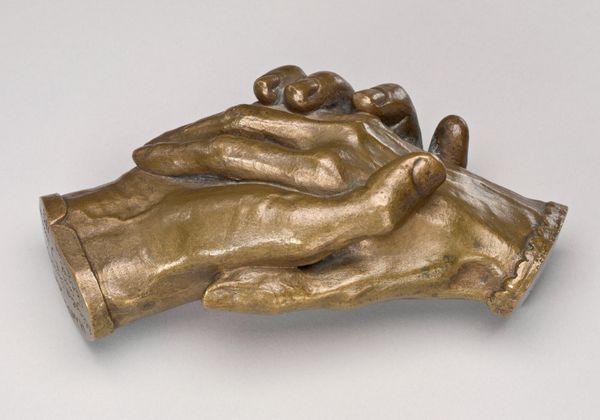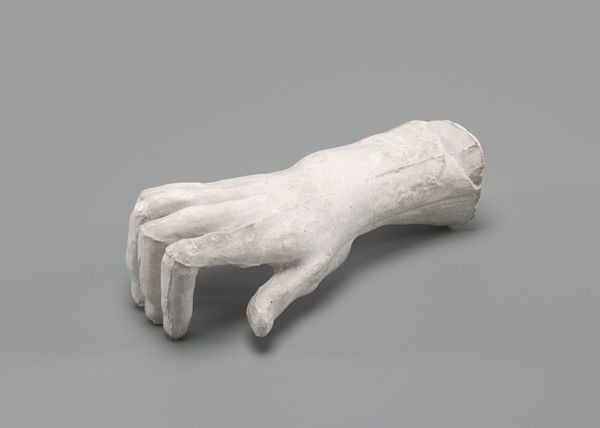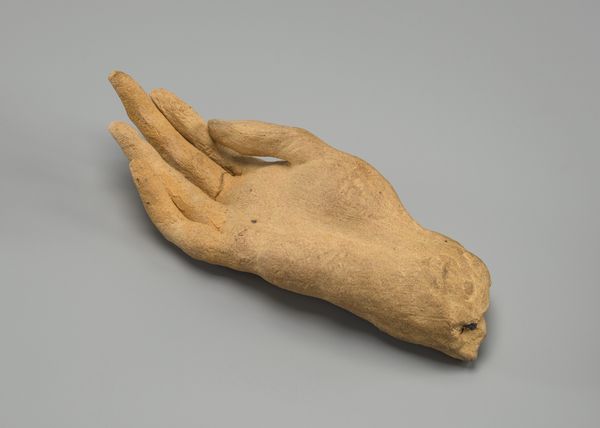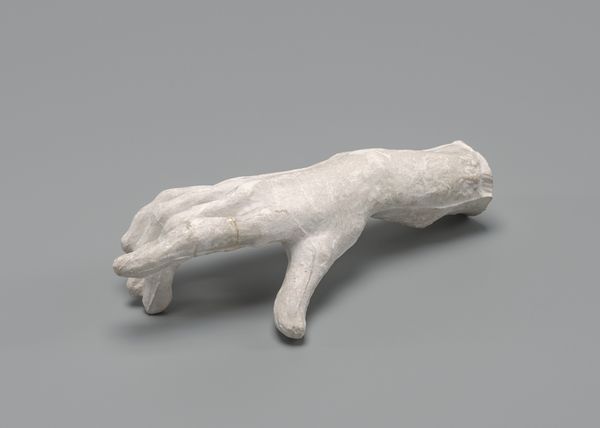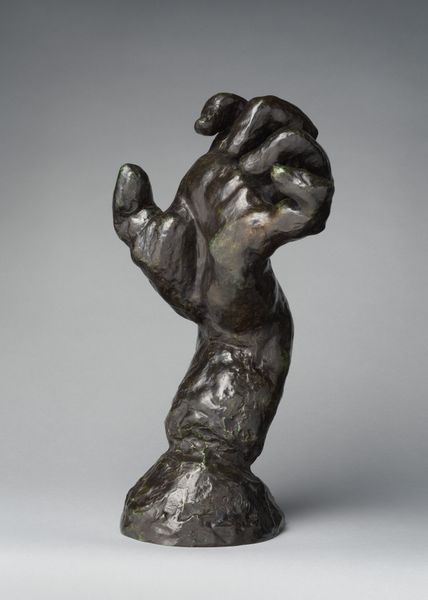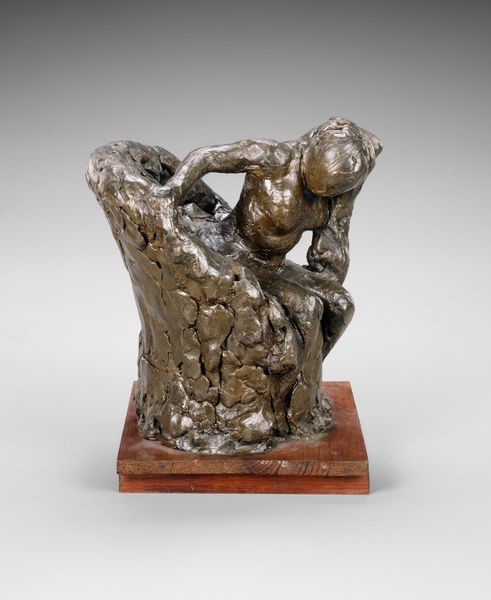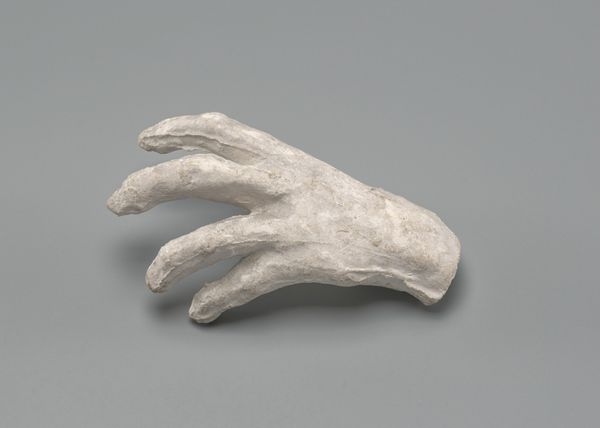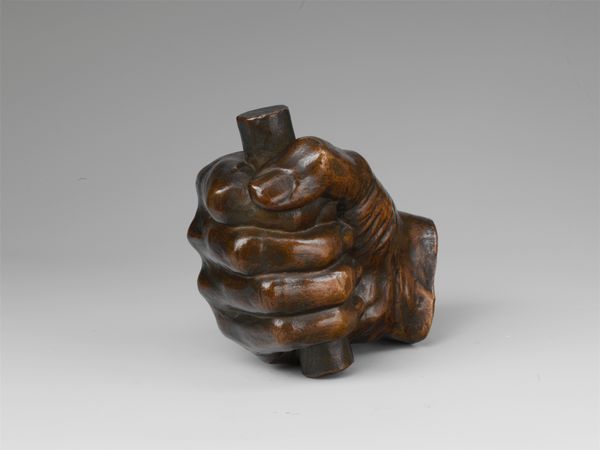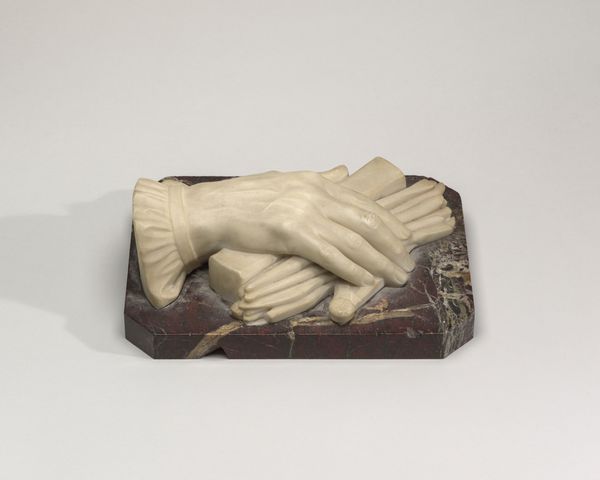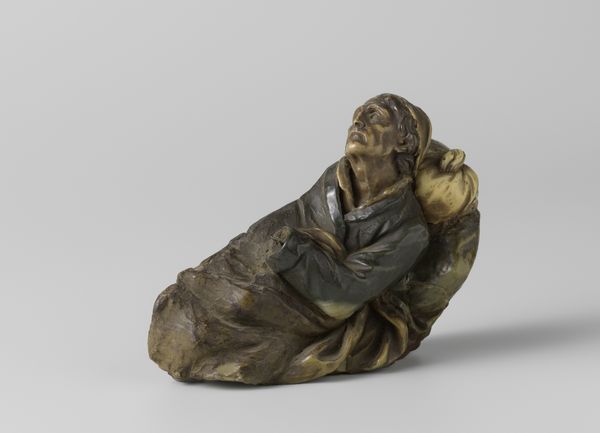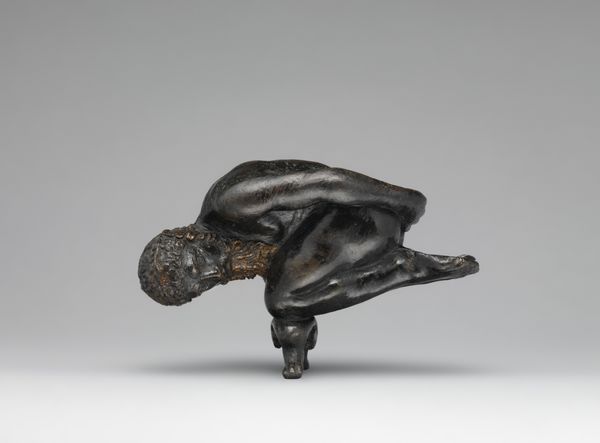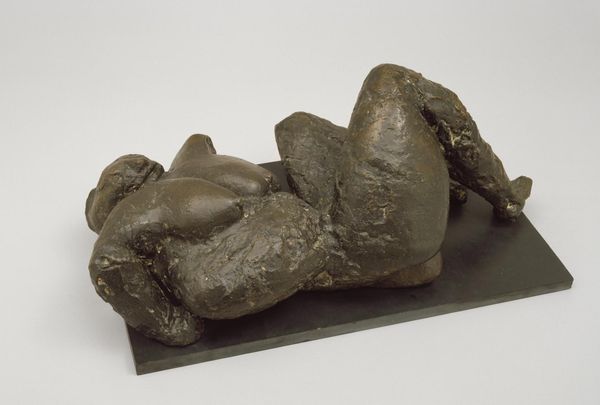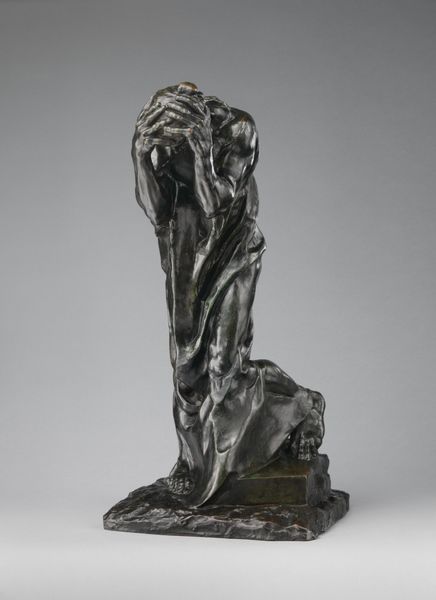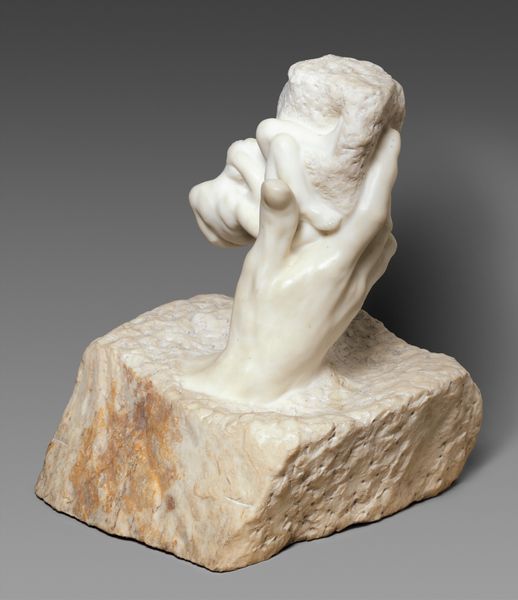
Clasped Hands of Robert and Elizabeth Barrett Browning 1853
0:00
0:00
Dimensions: 3 1/4 x 8 1/4 x 4 1/4 in. (8.3 x 21 x 10.8 cm)
Copyright: Public Domain
Editor: This is Harriet Goodhue Hosmer’s bronze sculpture, "Clasped Hands of Robert and Elizabeth Barrett Browning," created in 1853. It's so intimate, yet the material makes it feel permanent, like a monument. What do you see in this piece? Curator: I see more than just a depiction of marital affection; it’s a radical statement about partnership and intellectual equality. Consider the Brownings’ relationship: Elizabeth was a celebrated poet in her own right, defying societal expectations that confined women to domestic roles. This sculpture commemorates a union built on mutual respect and shared intellectual pursuits. How does the physical connection between the hands speak to their shared work? Editor: It's not a simple handshake; their fingers are intertwined. Is Hosmer perhaps suggesting that their lives and work became inseparable? Curator: Precisely. And consider Hosmer herself, a pioneering female sculptor working in a male-dominated field. By immortalizing the Brownings' bond, she subtly critiques the patriarchal structures that marginalized women artists and intellectuals. The sculpture becomes an act of solidarity, linking Hosmer's struggles with Elizabeth Browning's triumphs. Notice the texture of the hands. What does it evoke? Editor: They look weathered, lived-in. Maybe reflecting the hard work and dedication both put into their craft? Curator: Yes, but also the societal pressures they faced. Hosmer, through this sculpture, transforms a personal moment into a powerful symbol of resilience and shared ambition, subtly weaving feminist ideals into the narrative of Romantic love. Editor: I hadn't considered Hosmer's own story and how it connects. Now I see it as a layered commentary on love, work, and the fight for recognition. Curator: Exactly! Art offers multiple entry points for understanding historical contexts and their ongoing relevance. There's so much we can learn when we actively consider diverse perspectives in conversation with works like this.
Comments
No comments
Be the first to comment and join the conversation on the ultimate creative platform.
